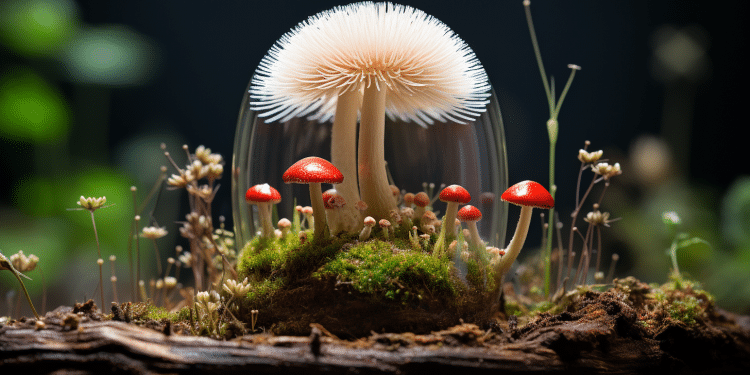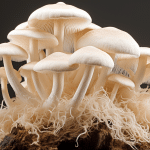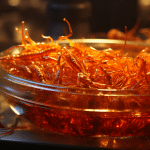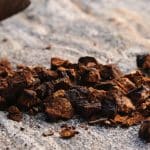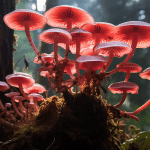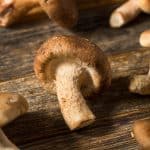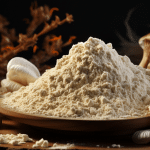A Complete Guide to Hedgehog Mushrooms
You are in for a treat if you enjoy foraging for edible mushrooms, and you live in a region that grows hedgehog mushrooms. And, if you are a mushroom foraging novice, there is no need to worry, because these are some of the easiest and safest mushrooms to harvest. These tasty, unique mushrooms are hugely popular amongst foragers and chefs alike because of the flavor and nutritional benefits.
In this article, you will learn what the hedgehog mushroom is, and where they are grown. You will also learn how to identify, harvest, clean, and enjoy hedgehog mushrooms.
What Is The Hedgehog Mushroom?
The hedgehog mushroom (Hydnum repandum), also called sweet-tooth, wooden hedgehog, or pie de mouton (French), is a popular, edible mushroom. It is one of a number of mushrooms that are often called hedgehog mushrooms, but many people believe that Hydnum repandum is the true hedgehog mushroom. Others believe that there are two major species that comprise the hedgehog mushrooms: the Hydnum repandum and Hydnum umbilicatum. They share some characteristics, but the squat, or navel, hedgehog (Hydnum umbilicatum) is smaller in size than the hedgehog, or sugar-tooth, mushroom (Hydnum repandum). Hydnum repandum is the more popular of the two because of its larger size.
You will have to choose the hip-button hedgehog far more often in order to have a decent diet. Hedgehog mushrooms are the familiar shape of mushrooms, including a stem and a cap. But they are named for their distinct structure that produces spores. Instead of having gills or pores at the bottom of the caps, they have many vertically hanging, short spines, or teeth.
Can You Eat Hedgehog Mushrooms? What Does It Taste Like?
Hedgehog mushrooms taste a bit sweet, earthy, and nutty, with a slight peppery finish. Many consider them to be among the best-tasting edible mushrooms, and they are similar to gold chanterelles in flavor. You can eat the whole fruiting body of the hedgehog mushroom, including cap, stem, and spines. They have firm meat with a crisp texture, which is a little chewy when cooked. Like many mushrooms, you will have to cook the hedgehog mushrooms before eating, and they are best enjoyed when still young and fresh.
Are Hedgehog Mushrooms Mycorrhizal or Parasitic?
Yes, the hedgehog mushrooms are mycorrhizal, meaning that they form a mutually beneficial, or symbiotic, relationship with trees. The underground mycelium from hedgehog mushrooms attaches to tree roots and helps the tree to absorb minerals and water.
In return, the tree provides a sugar, or simple carbohydrate, for the hedgehog mushroom, which makes the sugar by photosynthesis. A single mushroom may be connected to the roots of several trees, even different species. Its mycelium network allows trees to collaborate and transmit sugars and information among themselves.
How and Where Does Hedgehog Mushroom Grow?
Hedgehog mushrooms grow in rings or arches around the host trees in most types of mixed woods. They appear sparsely scattered, either alone or in tight clusters, beneath conifers and hardwoods such as spruce, birch, beech, and oak.
Hedgehog mushrooms are widely distributed, you will find them throughout the UK and Ireland, Canada, Australia, northern Asia, as well as all over Europe and North America. Once you have found a good hedgehog mushroom patch, you have a steady supply, since they come back year after year at the same place.
Can You Grow Hedgehog Mushrooms At Home?
No, you cannot grow hedgehog mushrooms at home because they are mycorrhizal. It is hard, if not impossible, to cultivate any kind of mycorrhizal mushrooms because they require a symbiotic relationship with trees in order to receive all of the nutrients that they require to grow.
Where Can I Buy Hedgehog Mushrooms?
You can buy hedgehog mushrooms at foragers, farmers markets, and certain specialty grocery stores. Because they are very hard to grow, you are better off finding them yourself and picking them up, or buying them from a local mushroom forager.
Are Hedgehog Mushrooms Seasonal?
Hedgehog Mushroom seasons vary depending on geographical location. You will find them from the middle of the summer through the end of the winter. Here are a few guidelines on the seasons of hedgehog mushrooms at various locations.
How to Identify Hedgehog Mushrooms in Nature
Now that you have got a pretty good sense of where hedgehog mushrooms grow and during what seasons, it is time to figure out how to identify them in the wild. The great thing about hedgehog mushrooms is that they are unique, making it easier for a new forager to recognize. Also perfect for beginners is that there are no toxic looking hedgehog mushrooms.
Hedgehog Mushrooms Cap
The cap is a pale cream-yellow to salmon-pink, and ranges in size from 1.5-8 inches (4-20 cm) wide, in a non-uniform, amoeba-like form. It is convex when the mushroom is young, becoming flat with a waved edge as it gets older. The surface is usually irregular, with the center sometimes a little slack.
Spines of the Hedgehog Mushroom
Densely packed, spongy spines or teeth line the bottom of the cap, continuing along the stem a short distance. They are cream-white to a gentle salmon-pink, circular cross-sectional, and range from about 0.8-2.4 inches (2-6 millimeters) in length, and are one of the most distinctive features of the hedgehog mushroom. The spines are easy to pull out, breaking the caps if you run a finger across them.
Stem
The stalk is typically 1.2-2.4 inches (3-6 cm) long, and 0.8-1.2 inches (1-3 cm) thick. With a stumpy irregular shape, occasionally extended to a base.
It is smooth and cream-white, or of the same color as the cap, and has no parting veil or loop. Sometimes it is attached to the center of the cap, but usually it is a bit out of center.
